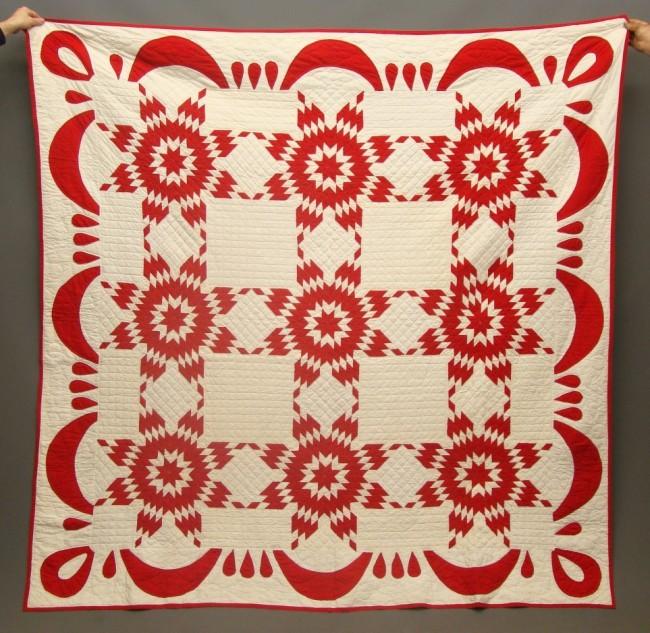Handmade Heirlooms Can Last for Generations; Tips for the preservation and care of beautiful and fragile handcrafted works of the quilt makers’ art.
History in Fabric
Quilts are like a fabric scrapbook of family history handed down from generation to generation. With the proper care and storage, these beautiful hand-worked heirlooms can last for years.
Quilt Analysis
To determine the proper care and storage regimen for your quilt, first make a thorough examination of the quilt. Note any spots or stains. These should be dealt with before storing, as even the tiniest food stain will attract hungry insects. Inspection should include determining the fabric content of the quilt top, backing, and applied decorations. Crazy quilts, in particular, are apt to contain wool and wool fibers. Check for damaged or missing stitches, which should be repaired by an expert before storing.
Quilts & Lighting
All fabrics, and especially quilts, must be kept out of direct sunlight, which can not only fade colors (blue is particularly prone to fading), but weaken the fibers and cause deterioration. Not only should quilts be out of the sun, direct fluorescent light can be harmful as well. Quilts are most safely stored in low-light or even dark areas and out of the path of reflected light.
Quilts & Climate Control
Quilts do best in a constant temperature of between 55 to 65 degrees, which means they need to be kept out of the basement and attic as well as your married daughter’s childhood bedroom that you never use because it’s too hot in the summer. It’s also important to control humidity, which should be a constant 50 percent. High humidity causes mold and mildew that stain fabric. Humidity that is too low causes dry rot.
Quilts & Pests
Your quilts make a cozy haven for mice, squirrels and other small mammals, so it is important that the area be secured against such invasions and inspected with some frequency. Insect pests prefer dark and undisturbed locations such as the back of a closet in an infrequently used room. Check for signs of insect life before storing your quilts. Moth crystals are effective, but should never come in direct contact with the quilt as long term exposure to chemicals can damage the fibers.
How to Clean Your Quilts
Quilts of recent vintage and high cotton content can be cleaned in a washing machine. Inspect the quilt carefully fist, making sure there are no tears, broken stitches, or shredded areas which will all be made worse from machine washing. Use a large or commercial washer on its most delicate cycle for its shortest duration along with a small amount of a mild (formulated for babies) detergent. Wash in cold water, and rinse until the rinse water is clear enough to drink.
You can air dry your quilt outside. Place the quilt on your lawn atop a clean white sheet. Put another sheet on top to prevent stains from blowing grass and leaves, family pets, wildlife, and passing birds. Sturdy, recent vintage quilts can be dried in the sun when covered with a sheet, but avoid direct, mid-day, midsummer sun.
If a quilt is older consider vacuuming it if you have a vacuum with gentle suction. Vacuum your quilt through a fiberglass screen (available at hardware stores) making sure that the rough edges of the screening material do not tear the quilt. If your quilt is very old, very delicate, very precious, or very valuable, check with a Conservator or other expert before using any cleaning method.
How to Store Your Quilts
Quilts are best stored flat and unstacked. If you don’t have the space, they can be rolled and folded with the following precautions. If you’re storing them in a cedar or blanket chest, avoid contact with the wood. Quilts should be carefully wrapped in acid free tissue, white cotton sheets, or washed, unbleached muslin. Roll or fold your quilts in the aforementioned materials carefully padding any folds with extra tissue or fabric. Never store your quilts in plastic bags or storage bins, and be certain to refold them periodically or the fibers will weaken along the fold lines.
-Article by p4A contributing editor Susan Cramer.





No comments
Comments feed for this article
Trackback link: https://www.prices4antiques.com/blog/caring-for-antique-quilts/trackback/